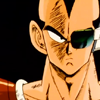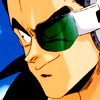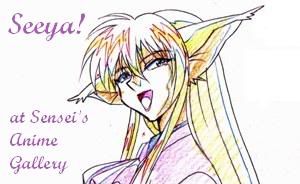I don't even know where to begin with this.
I bought an auction that was just posted an hour ago to what I think is the entire storyboard(s)? for a whole episode of Tokyo Mew Mew. I have only seen storyboards for this anime twice in my life. Would anyone be willing to help me with translating the auction description/title?
I have a few questions regarding storyboards from the early 2000s... were they often photocopied in production? I'm hoping that these are the originals although I have doubts as well because the title of the auction reads "東京ミュウミュウ 絵コンテ 13 ♯ セル画 原画 レイアウト 複製原画 設定資料" and translated on google this says: "Tokyo Miu Miu Storyboard 13 ♯ Original Layout Reproduction Original Drawing Setting Material"
I don't know much about storyboards. The word that throws me off is "reproduction" and that led me to believe that these are photocopies. Regardless, I bought them anyway. But any insight would be appreciated!
This is the description:
"お手数おかけいたしますが必ず注意事項、自己紹介文を
ご確認してから入札をご検討くださいませ
商品説明
東京ミュウミュウ 絵コンテ13話
多少の傷、汚れあり
アニメの製作仮定で使用された資料ですので
若干の汚れ、劣化、使用感などにご理解のある方のみご入札ください
原画、動画類で枚数の多いものは見栄えいいものをアップしております
輪郭などの部分動画が多数ある場合もございます、セル画、原画類は
稀にタイトル間違いがございます画像をよくご確認の上ご入札ください
ゆうパック梱包60サイズ
"
Question about storyboards
Question about storyboards
- Attachments
-
- storyboards.png (418.54 KiB) Viewed 1182 times
-
- storyboards2.png (218.95 KiB) Viewed 1182 times


- sensei
- Moderator and Admin-in-waiting

- Posts: 4997
- Joined: Fri Oct 01, 2004 6:55 am
- Location: Cephiro
- Contact:
Re: Question about storyboards
Storyboards usually are photocopies. They are normally reduced somewhat from original size, printed front-and-back (duplex) and stapled at the top or down one margin. Then they are provided to the studio staff working on a given episode for general reference. Sometimes they come with holograph annotations, which indicate that they were used during production by one of the artists (often one of the key animators assigned a certain number of cuts).
Sometimes holograph storyboards do show up on the market. My storyboards for Condition Green, Eps. 3 and 6, are both the original autograph pencil-on-paper items. But in both cases the seller's description stressed that the item sold was holograph and not a reproduction.
Robot translations can be misleading, particularly as some of the items are intended to trigger searches. "Original" doesn't translate the Japanese for "holograph" but instead renders "原画" or "genga" [keyframe in US terminology]. The item isn't a genga (these are normally holograph) or an レイアウト "layout" (which can be reproduction or holograph) or even 設定資料 "settei shiryō" [setting materials] (which are always reproduction. These phrases are common search terms that the title of the auction includes because people who collect these items will find this auction in their search returns, and they can sometimes be interested in a storyboard.
I'd say it's most likely that what you've won is a very interesting 複製原画 "fukusei genga" or reproduction keyframe. Properly, it's a "conte" or continuity, a "storyboard" in US animation terms. These can be quite revealing as they show the episode director's initial conception of how the entire episode will work visually, and if you like the series and know the episode, you'll learn a lot from giving it close inspection.
Sometimes holograph storyboards do show up on the market. My storyboards for Condition Green, Eps. 3 and 6, are both the original autograph pencil-on-paper items. But in both cases the seller's description stressed that the item sold was holograph and not a reproduction.
Robot translations can be misleading, particularly as some of the items are intended to trigger searches. "Original" doesn't translate the Japanese for "holograph" but instead renders "原画" or "genga" [keyframe in US terminology]. The item isn't a genga (these are normally holograph) or an レイアウト "layout" (which can be reproduction or holograph) or even 設定資料 "settei shiryō" [setting materials] (which are always reproduction. These phrases are common search terms that the title of the auction includes because people who collect these items will find this auction in their search returns, and they can sometimes be interested in a storyboard.
I'd say it's most likely that what you've won is a very interesting 複製原画 "fukusei genga" or reproduction keyframe. Properly, it's a "conte" or continuity, a "storyboard" in US animation terms. These can be quite revealing as they show the episode director's initial conception of how the entire episode will work visually, and if you like the series and know the episode, you'll learn a lot from giving it close inspection.
